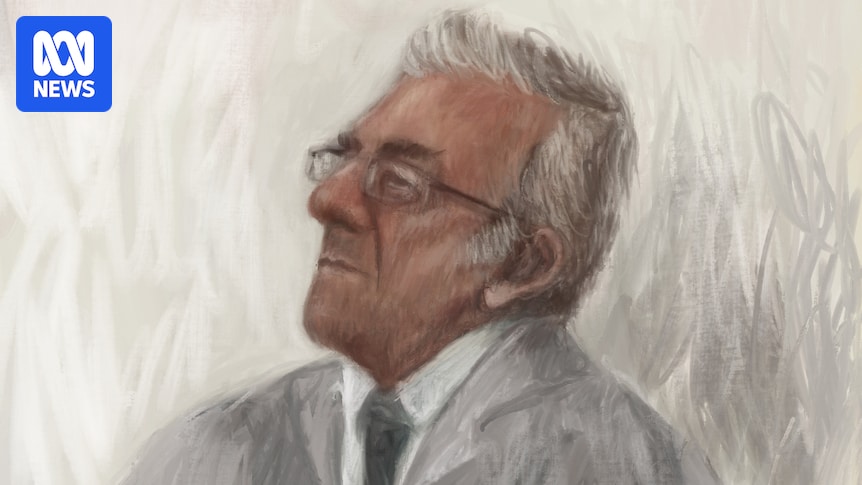Remembering things from nearly 50 years ago is no easy task — but for those who encountered the aftermath of a brutal double murder, some memories have not faded.
Warning: This story contains graphic details and imagery.
Key figures during the investigation into the murders of Suzanne Armstrong and Sue Bartlett were in the spotlight again on Thursday, called to give evidence in the Melbourne Magistrates’ Court.
Sometime between January 10 and 13 in 1977, the women were stabbed to death inside their share house on Easey Street in Collingwood.
Now, 66-year-old Perry Kouroumblis is facing a committal hearing, with a magistrate to decide whether he should face a Supreme Court trial for double murder and raping Ms Armstrong.
Mr Kouroumblis, whose DNA was allegedly found at the scene, is pleading not guilty and maintains his innocence.
Susan Bartlett and Suzanne Armstrong were housemates in Collingwood in 1977. (Supplied: Victoria Police)
Former homicide detective reveals grisly details of crime scene
In the witness box on Thursday was a neighbour who made the grim discovery of the bodies, officers who rushed to the scene, and retired homicide detectives who tried to solve the case.
A common theme emerged during proceedings. Some images remained burnt into the witnesses’ minds, but other crucial details — dates, observations and conversations — had been lost to time.
Former detective Adrian Donehue recalled seeing Ms Armstrong’s bloody and partially naked body on the floor of her bedroom, as well as possible evidence of sexual assault on her body.
Mr Donehue said the victim was in a position that investigators “would expect to see for a post-mortem rape”.
“The lady was dead and she was in this pose that I’ve described, which led me to believe that occurred when she was dead,” he said.
Adrian Donehue is a former police detective who investigated the murders more than four decades ago. (AAP: Joel Carrett)
However, Mr Donehue’s memory was hazy on other details about the investigation from 48 years ago, including people who were interviewed.
If you or anyone you know needs help:
When a recording was played of detectives questioning one man, Barry Woodard, and accusing him of the murders, Mr Donehue denied being the voice on the tape and said he was not sure which one of his colleagues it was.
“I’ve got no memory of that interview at all,” he said.
He also denied telling an Easey Street resident in 1977 that police had a prime suspect in mind.
“My memory is not crash-hot going back to conversations that happened 50 years ago,” he said.
“We never had any good suspects. I wish we had.”
Neighbour recalls grim discovery
Earlier on Thursday, neighbour Ilona Miklosvary recounted how she and housemate Janet Powell discovered the bodies of Ms Bartlett and Ms Armstrong on the morning of January 13, 1977.
Ms Miklosvary, a former journalist whose maiden name was Ilona Stevens, remembered seeing Ms Bartlett’s body first.
“I could just see her feet, she was at the end of the passageway,” she said.
“I bent down over Sue Bartlett and it was obvious she was dead.”
IIona Miklosvary (nee Stevens) was asked to recall the events of a January morning 48 years ago. (AAP: Joel Carrett)
Under cross-examination, Ms Miklosvary was quizzed about other events from the time by Mr Kouroumblis’s barrister, Dermot Dann KC.
Did she have concerns about home intruders in the neighbourhood? Did visitors regularly pop into Ms Bartlett and Ms Armstrong’s home? Had she heard suspicious noises coming from the property?
Ms Miklosvary said she could not remember.
“It is nearly 50 years ago,” she said.
Defence raises questions about former murder suspect
Mr Dann also inquired about a man named John Grant.
Mr Grant, the court heard, was a journalist colleague of Ms Miklosvary at The Truth newspaper in Melbourne and was once considered a suspect in another murder case.
Ms Miklosvary said she had given Mr Grant a key to her house, and that he had stayed over on the night of January 10, 1977.
However, she said Mr Grant was not at her house the night before the bodies were found.
The court heard that according to Ms Miklosvary’s police statement at the time, she considered Mr Grant someone who was “capable of murder”.
However, on Thursday, Ms Miklosvary said she could not recall saying that to the police and did not believe it to be true.
Dermot Dann is leading the defence for Mr Kouroumblis. (AAP: Joel Carrett)
Mr Dann asked if other descriptors of Mr Grant were genuine — that he was a heavy drinker, foul-mouthed and would proposition women for sex.
“It was in keeping with most of the men I knew,” Ms Miklosvary replied, drawing laughter in the courtroom.
“If you want to work with journalists, that’s what happened. It was in the 70s, you weren’t there.”
Another homicide detective dispatched to the scene in 1977 was Douglas Carroll.
Mr Carroll made diary notes, but told the court he could not remember much of what unfolded during the investigation.
He had no memory of taking a statement from a male friend of Ms Bartlett, Ross Hammond, or from the man now charged with murder, Mr Kouroumblis.
Mr Kouroumblis, who lived 230 metres from the murder scene, was found in possession of a knife days after the killings.
“I can’t remember seeing any knife wounds or anything,” Mr Carroll said.
The committal hearing is set to continue in November.

